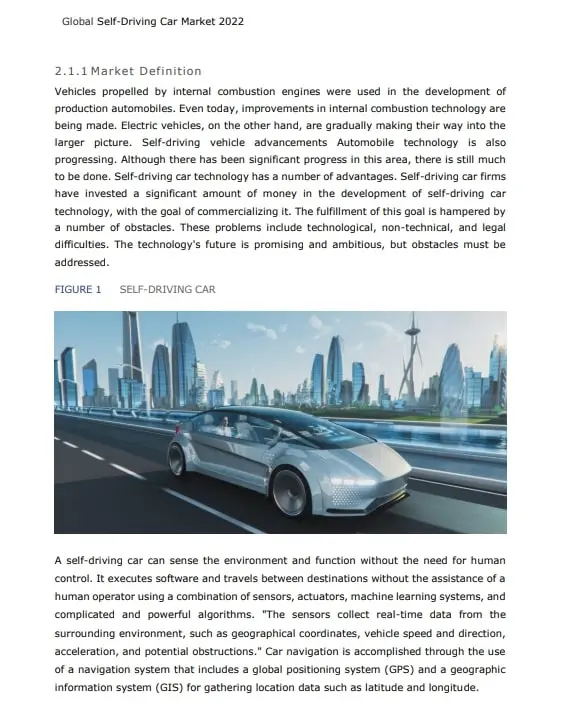- +1 551 333 1547
- +44 2070 979277
- live:skype_chat
EV Charging Software Market Scope
The EV charging software market is experiencing rapid growth, driven by the increasing adoption of electric vehicles (EVs) and the need for efficient charging infrastructure. The market is segmented into charging management software, payment & billing software, navigation & mapping software, and analytics & reporting platforms. Charging management software dominates the market as it enables operators to optimize charger usage, monitor real-time performance, and provide remote troubleshooting. Payment & billing solutions are gaining traction due to the need for seamless transactions, subscription models, and integration with digital wallets. Navigation & mapping software is crucial for guiding EV users to nearby charging stations, while analytics platforms help businesses track energy consumption, user behavior, and station efficiency | Attributes | Details |
|---|---|
| Study Period | 2020-2032 |
| Base Year | 2024 |
| Unit | Value (USD Million) |
| Key Companies Profiled | |
| CAGR |
Competition among existing players is due to the EV Charging Software market share occupied by leading players. The industry leader is engaged in offering innovative and superior quality products to cater to the ever-growing demand for the EV Charging Software market. The companies are implementing strategic activities such as acquisitions and mergers along with collaboration with companies in other industries to aid them in improving sustenance and maintaining their competitive advantage.
About Approach
The research aims to propose a patent-based approach in searching for potential technology partners as a supporting tool for enabling open innovation. The study also proposes a systematic searching process of technology partners as a preliminary step to select the emerging and key players that are involved in implementing market estimations. While patent analysis is employed to overcome the aforementioned data- and process-related limitations, as expenses occurred in that technology allows us to estimate the market size by evolving segments as target market from the total available market.Segmentation Overview
The study have segmented the market of Global EV Charging Software market by Type , by Application (AC Charging, DC Fast Charging and Wireless Charging) and Region with country level break-up.On the basis of geography, the market of EV Charging Software has been segmented into
Market Leaders and their expansionary development strategies
In January 2025, Exicom has joined hands with ChargeZone, India's fastest growing integrated e-mobility company to develop and deploy 500+ future-ready, high-power EV Charging Stations including those integrated with renewable energy. India's push towards clean energy and the increased adoption of electric vehicles make it crucial to develop and deploy scalable and sustainable charging solutions. This collaboration aligns with the government's intent of building robust EV infrastructure to accelerate the transition to emission-free mobility in the country.In December 2024, ChargeLab is announcing the beta launch of Spark, the next generation of AI tools for proactive EV charger monitoring and maintenance. Spark uses AI and machine learning to help teams keep EV chargers reliable and functional, regardless of charger make or model. The suite of tools is aimed at spotting charging network issues before they stop EV drivers from charging.
Influencing Trend:
Rising EV Adoption user-friendly charging solutionsMarket Growth Drivers:
Rising demand for EVs fuels and Increasing investments in public & private EV charging stations.Challenges:
Stringent RegulationRestraints:
High Initial CostOpportunities:
Integration with AI & IoT and Integration with grid systems and renewable energy sourcesKey Target Audience
Manufacturers Suppliers and Distributors, Venture Capitalists and Private Equity Firms, New Entrants/Investors, Strategic Business Planners, Government Regulatory, Research Organizations, End-Use Industries and OthersReport Objectives / Segmentation Covered
By Application
- AC Charging
- DC Fast Charging
- Wireless Charging
By By Software Type
- Charging Management Software
- Payment & Billing Software
- Navigation & Mapping Software
- Fleet Management Software
- Analytics & Reporting Software
By By Deployment Mode
- Cloud-Based
- On-Premise
By By End-User
- Residential
- Commercial (Public & Private Charging Stations)
- Fleet Operators
- Utility Providers
By Regions
- 1. Market Overview
- 1.1. Introduction
- 1.2. Scope/Objective of the Study
- 1.2.1. Research Objective
- 2. Executive Summary
- 2.1. Introduction
- 3. Market Dynamics
- 3.1. Introduction
- 3.2. Market Drivers
- 3.2.1. Rising demand for EVs fuels
- 3.2.2. Increasing investments in public & private EV charging stations.
- 3.3. Market Challenges
- 3.3.1. Stringent Regulation
- 3.4. Market Trends
- 3.4.1. Rising EV Adoption user-friendly charging solutions
- 4. Market Factor Analysis
- 4.1. Porters Five Forces
- 4.2. Supply/Value Chain
- 4.3. PESTEL analysis
- 4.4. Market Entropy
- 4.5. Patent/Trademark Analysis
- 5. Global EV Charging Software, by Application, By Software Type, By Deployment Mode and By End-User (value) (2019-2024)
- 5.1. Introduction
- 5.2. Global EV Charging Software (Value)
- 5.2.1. Global EV Charging Software by: Application (Value)
- 5.2.1.1. AC Charging
- 5.2.1.2. DC Fast Charging
- 5.2.1.3. Wireless Charging
- 5.2.2. Global EV Charging Software by: By Software Type (Value)
- 5.2.2.1. Charging Management Software
- 5.2.2.2. Payment & Billing Software
- 5.2.2.3. Navigation & Mapping Software
- 5.2.2.4. Fleet Management Software
- 5.2.2.5. Analytics & Reporting Software
- 5.2.3. Global EV Charging Software by: By Deployment Mode (Value)
- 5.2.3.1. Cloud-Based
- 5.2.3.2. On-Premise
- 5.2.4. Global EV Charging Software by: By End-User (Value)
- 5.2.4.1. Residential
- 5.2.4.2. Commercial (Public & Private Charging Stations)
- 5.2.4.3. Fleet Operators
- 5.2.4.4. Utility Providers
- 5.2.1. Global EV Charging Software by: Application (Value)
- 6. Global EV Charging Software Sale, by Application, By Software Type, By Deployment Mode and By End-User (value) (2027-2032)
- 6.1. Introduction
- 6.2. Global EV Charging Software (Value)
- 6.2.1. Global EV Charging Software by: Application (Value)
- 6.2.1.1. AC Charging
- 6.2.1.2. DC Fast Charging
- 6.2.1.3. Wireless Charging
- 6.2.2. Global EV Charging Software by: By Software Type (Value)
- 6.2.2.1. Charging Management Software
- 6.2.2.2. Payment & Billing Software
- 6.2.2.3. Navigation & Mapping Software
- 6.2.2.4. Fleet Management Software
- 6.2.2.5. Analytics & Reporting Software
- 6.2.3. Global EV Charging Software by: By Deployment Mode (Value)
- 6.2.3.1. Cloud-Based
- 6.2.3.2. On-Premise
- 6.2.4. Global EV Charging Software by: By End-User (Value)
- 6.2.4.1. Residential
- 6.2.4.2. Commercial (Public & Private Charging Stations)
- 6.2.4.3. Fleet Operators
- 6.2.4.4. Utility Providers
- 6.2.1. Global EV Charging Software by: Application (Value)
- 7. Appendix
- 7.1. Acronyms
- 8. Methodology and Data Source
- 8.1. Methodology/Research Approach
- 8.1.1. Research Programs/Design
- 8.1.2. Market Size Estimation
- 8.1.3. Market Breakdown and Data Triangulation
- 8.2. Data Source
- 8.2.1. Secondary Sources
- 8.2.2. Primary Sources
- 8.3. Disclaimer
- 8.1. Methodology/Research Approach
List of Tables
- Table 1. EV Charging Software: by Application(USD Million)
- Table 2. EV Charging Software: by By Software Type(USD Million)
- Table 3. EV Charging Software: by By Deployment Mode(USD Million)
- Table 4. EV Charging Software: by By End-User(USD Million)
- Table 5. EV Charging Software: by Application(USD Million)
- Table 6. EV Charging Software: by By Software Type(USD Million)
- Table 7. EV Charging Software: by By Deployment Mode(USD Million)
- Table 8. EV Charging Software: by By End-User(USD Million)
- Table 9. Research Programs/Design for This Report
- Table 10. Key Data Information from Secondary Sources
- Table 11. Key Data Information from Primary Sources
List of Figures
- Figure 1. Porters Five Forces
- Figure 2. Supply/Value Chain
- Figure 3. PESTEL analysis
- Figure 4. Global EV Charging Software: by Application USD Million (2019-2024)
- Figure 5. Global EV Charging Software: by By Software Type USD Million (2019-2024)
- Figure 6. Global EV Charging Software: by By Deployment Mode USD Million (2019-2024)
- Figure 7. Global EV Charging Software: by By End-User USD Million (2019-2024)
- Figure 8. Global EV Charging Software: by Application USD Million (2027-2032)
- Figure 9. Global EV Charging Software: by By Software Type USD Million (2027-2032)
- Figure 10. Global EV Charging Software: by By Deployment Mode USD Million (2027-2032)
- Figure 11. Global EV Charging Software: by By End-User USD Million (2027-2032)
List of companies from research coverage that are profiled in the study
Select User Access Type
Key Highlights of Report
Jan 2025
205 Pages
94 Tables
Base Year: 2024
Coverage: 15+ Companies; 18 Countries
Request Sample Pages
Budget constraints? Get in touch with us for special pricing
Check Discount NowTalk to Our Experts
Want to Customize Study?
"We employ Market statistics, Industry benchmarking, Patent analysis, and Technological Insights to derive requirements and provide customize scope of work."
Frequently Asked Questions (FAQ):
The key segments that are playing vital role in EV Charging Software Market are by end use application [AC Charging, DC Fast Charging and Wireless Charging].
The EV Charging Software Market is gaining popularity and expected to see strong valuation by 2032.
- Rising demand for EVs fuels
- Increasing investments in public & private EV charging stations.



